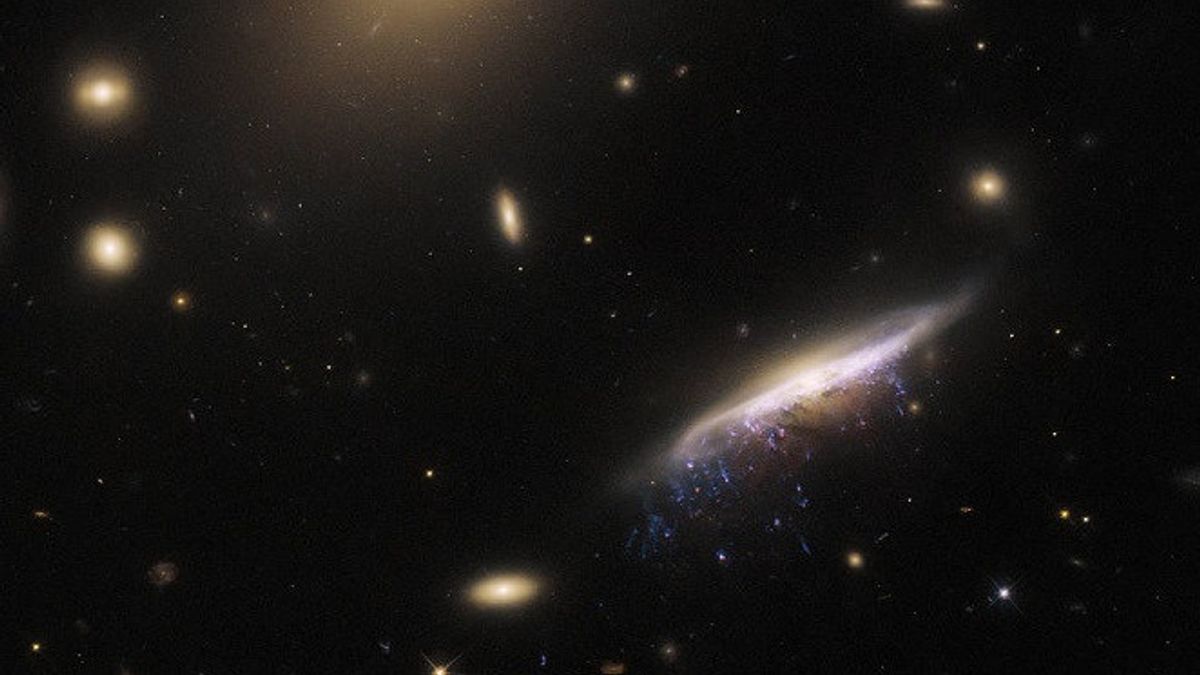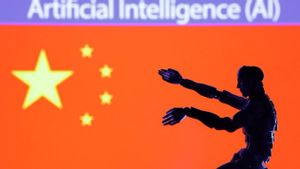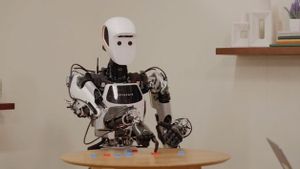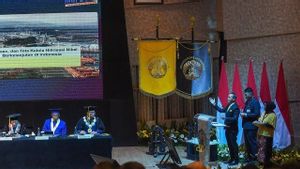JAKARTA - The Hubble Space Telescope has captured a galaxy that looks like a cult. Dubbed the JW100 galaxy, it is located more than 800 million light-years in the constellation Pegasus.
Looks like a cultivator, JW100 is a type of galaxy that exhibits long culverts illuminated by clumps of star-forming gas, flowing away from the galactic nucleus, namely its body, giving a appearance like a cultimator.
According to NASA, quoted Monday, March 27, such a phenomenon is caused by a process called ram pressure stripping, occurring when galaxies pass through gas then spread to include galaxy clusters.
As the galaxy penetrates the thin gas, it acts like a salal wind, releases gas and dust from the galaxy and creates bands that adorn JW100 strikingly. The bright elliptical patch on the image is another galaxy in the cluster hosting JW100.
The Hubble Telescope captures JW100 from the edge, indicating the central bulge of the galaxy consisting of stars, gas, and dust, as well as its bright spiral arms. The blue trails of patchyrules can be seen extending below the galaxy, resembling aferoval.
At the top of the Hubble Telescope image there are two bright spots surrounded by a light propagating area. These are the cores of IC 5338, the brightest galaxies in the cluster of galaxies, classified as cD galaxies and have two cores.
All of these galaxies belong to the same cluster. These galaxies are likely to grow by eating smaller galaxies, so it's not uncommon for them to have many cores because it takes a long time to absorb their cores.
The bright spot of light that fills the outer periphery of the galaxy is a population rich in globular star clusters. These observations take advantage of Hubble's Wide Field Camera 3 and its capabilities.
The data is part of an observational sequence designed to explore star formation in the culverts of airquake galaxies. This culvert represents star formation in extreme conditions and can help astronomers better understand the star formation process elsewhere in the universe.
The English, Chinese, Japanese, Arabic, and French versions are automatically generated by the AI. So there may still be inaccuracies in translating, please always see Indonesian as our main language. (system supported by DigitalSiber.id)













